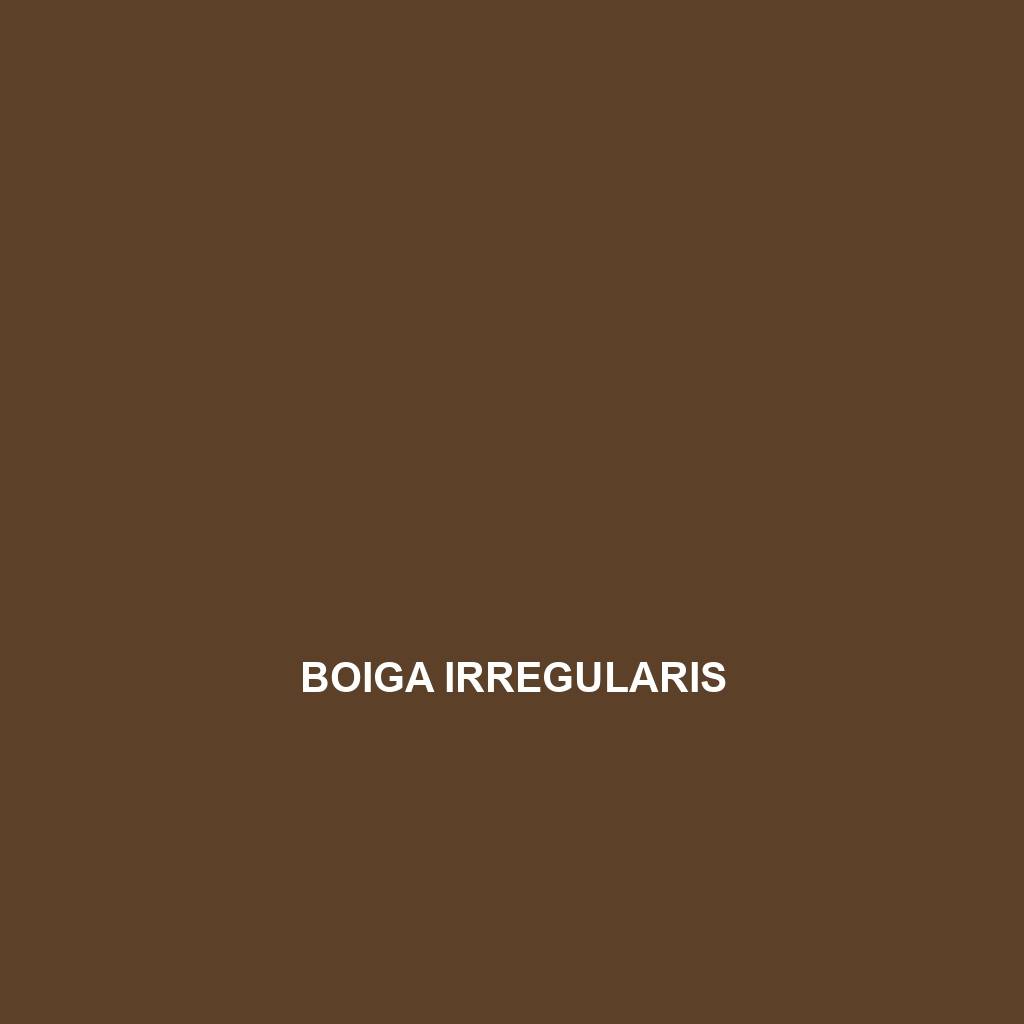Boiga irregularis Species Description
Common Name: Boiga irregularis
Scientific Name: Boiga irregularis
Habitat
The Boiga irregularis, commonly known as the brown treesnake, is primarily found in the tropical forests of Papua New Guinea, the Solomon Islands, and Guam. This species thrives in arboreal environments, favoring humid areas with dense foliage, where it can easily hunt for prey and remain concealed from predators. The brown treesnake has also adapted to altered habitats, including rural and urban areas, especially on the island of Guam, due to its introduction there.
Physical Characteristics
Boiga irregularis is a medium to large species of snake, typically measuring between 1.5 to 2.5 meters (5 to 8 feet) in length. The coloration of this snake varies, featuring a base color that ranges from yellowish to brown, often adorned with dark, contrasting stripes or blotches. Its distinctive large eyes with vertical pupils contribute to its active, nocturnal hunting behavior, making it an agile climber with a slender, elongated body.
Behavior
This species is primarily nocturnal, exhibiting arboreal behavior by spending much of its life in trees. Known for its adept climbing skills, the brown treesnake often hunts small mammals, birds, and reptiles. It is also recognized for its capability to mimic the movements of tree branches, making it an effective ambush predator. Additionally, Boiga irregularis displays a defensive behavior of flattening its body and hissing when threatened, which adds to its enigmatic nature.
Diet
The diet of Boiga irregularis is diverse, predominantly consisting of small mammals, birds, and lizards. As a carnivorous species, it operates as a nocturnal hunter, utilizing its keen sense of sight and remarkable agility to capture prey in the trees. This species is also known to eat eggs, showcasing its adaptability in feeding habits. Such flexibility in diet allows it to thrive in a variety of environments.
Reproduction
Boiga irregularis reproduces through oviparity, typically laying clutches of 10 to 30 eggs between April and August. The females show maternal care by coiling around their eggs to protect them until they hatch, usually around 60 to 70 days later. The hatchlings, measuring about 30 centimeters (1 foot), are independent from birth, showcasing the species’ strategy for survival and reproduction in competitive environments.
Conservation Status
The conservation status of Boiga irregularis varies across its range, with populations on Guam experiencing significant decline due to invasive species and habitat destruction. While globally it is not considered endangered, its presence in certain areas poses threats to local fauna, leading to concerns about its invasive nature, particularly in ecosystem balance.
Interesting Facts
One fascinating fact about Boiga irregularis is its notable role in the ecological disruption on Guam, where its introduction has led to the decline of several native bird species. This highlights the impact a single species can have on local biodiversity. Additionally, the brown treesnake has adapted remarkably well to urban settings, becoming a common sight in residential areas.
